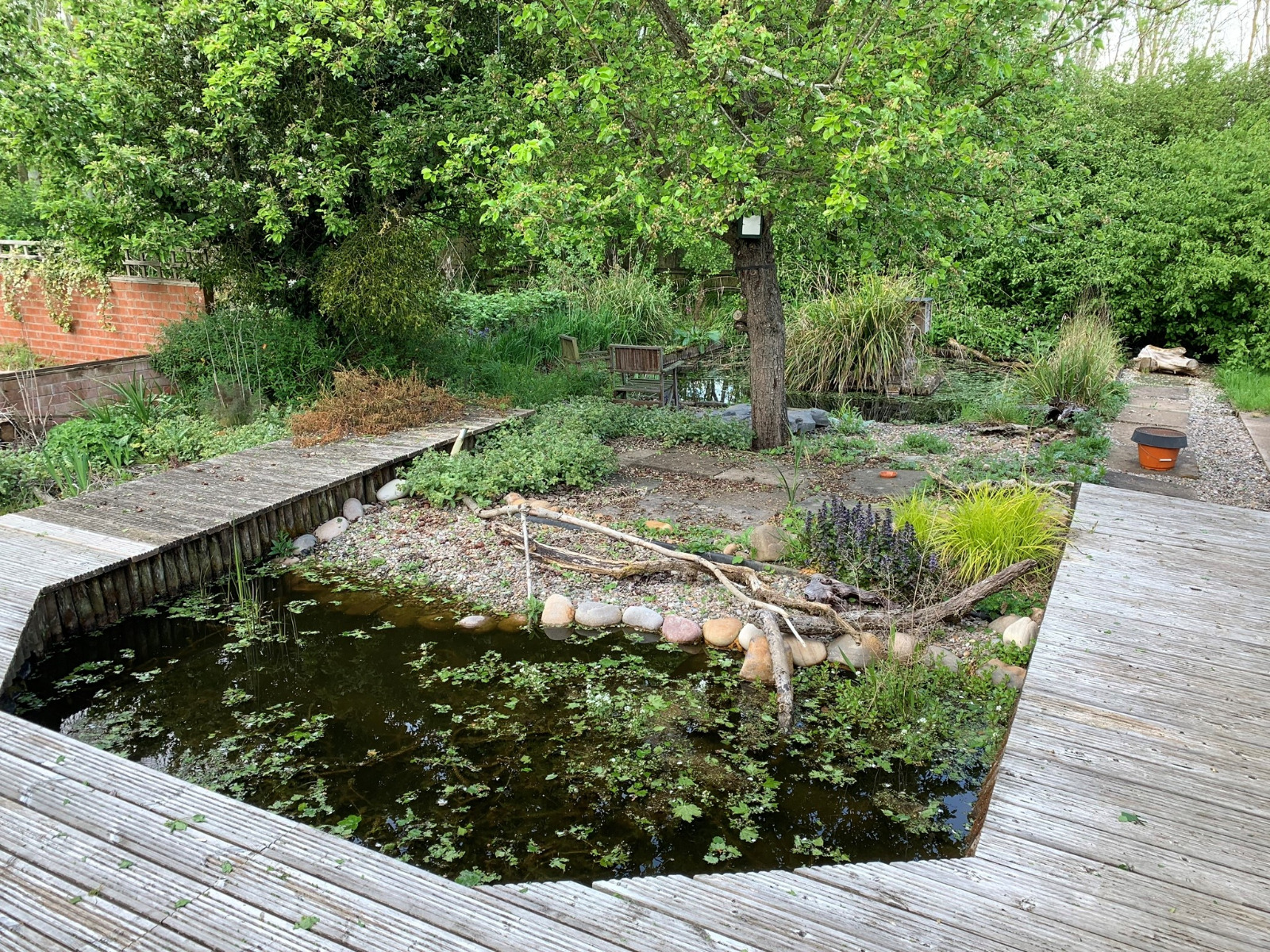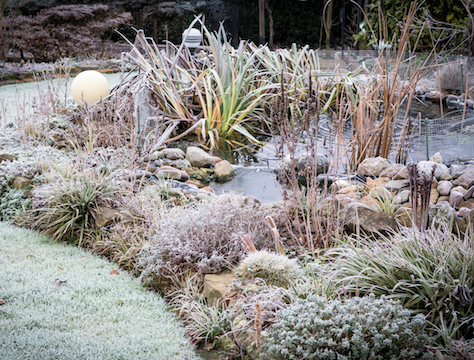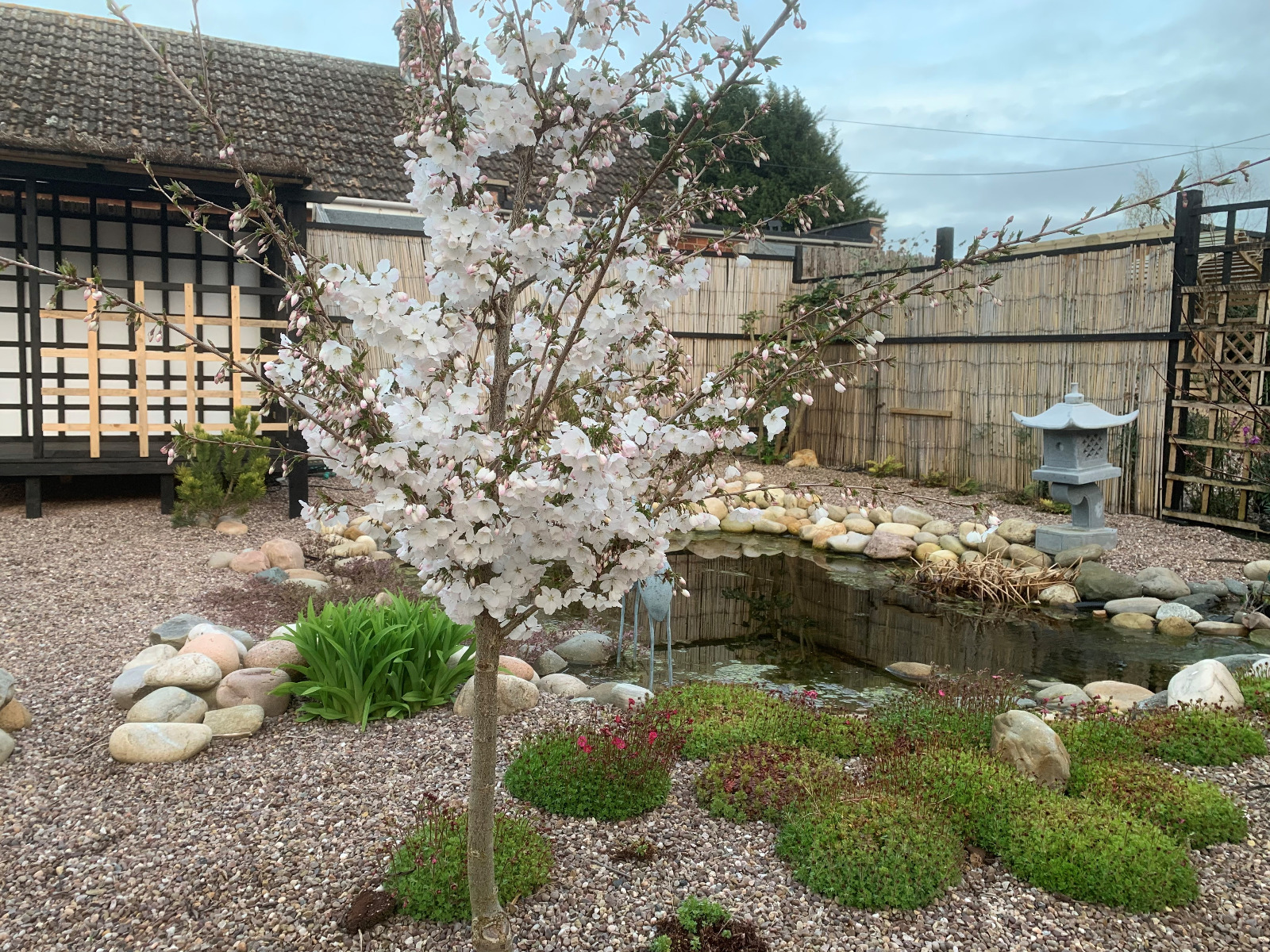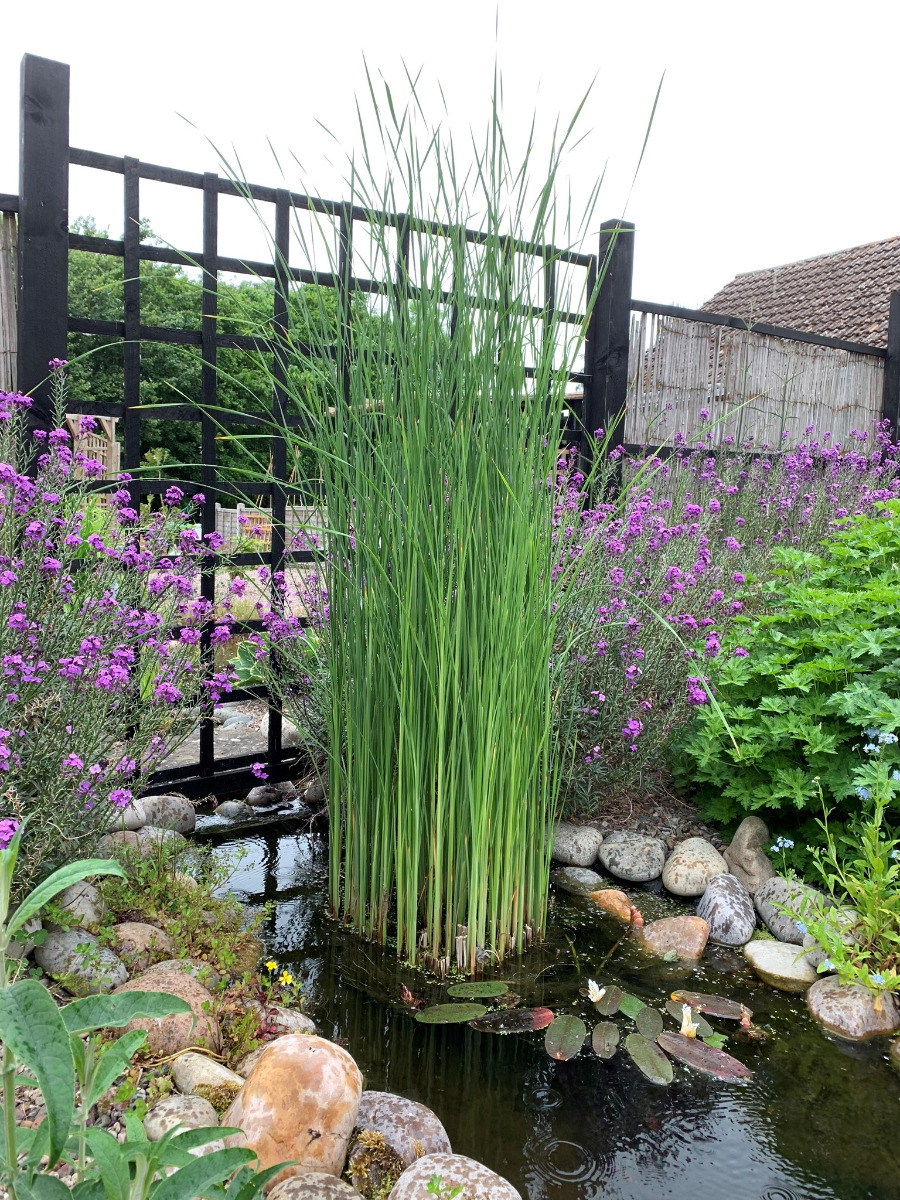How to Plan a Garden Pond
Adding water to your garden has many benefits to our health and wellbeing. It can provide a connection with a wider world by attracting wildlife as well as an escape from a troubled day by offering tranquillity and letting your mind float amongst the fishes. Therapeutic gardening is now a studied phenomenon and studies reveal a real impact on anxiety and depression. There’s also no escaping the good physical workout that comes from digging a large pond and the satisfaction from completing the project.

In order to achieve maximum benefit, it’s good to get it right the first time. Long winter evenings are ideal for the planning and research stage, as you consider the style of feature you want and the constraints of space and budget. At this stage, I’d suggest considering a couple of options, as well as the possibility of more than one pond if you have the room.
Before you get started
Regardless of the type of pond you’re planning, there are some guidelines that apply to them all.
Site your pond where it will receive at least six hours of sunlight a day if possible. This is important for plants such as waterlilies as well as providing the warmth and energy that fuels biological processes. As well as shade, trees also mean leaf fall and roots that complicate digging and are best avoided.
Choose a level site. Water will always find its own level, and this can lead to problems if you garden on a slope. Consider the lie of the land and don’t forget that a raised, or semi-raised pond can be constructed and incorporated into a terrace if needed. If the ground does slope slightly, a bog garden makes use of any overflowing water and gives the opportunity to grow some very attractive plants.
Think about utilities. If your garden is large, consider the practicalities of installing electrics or how wastewater will be handled in the case of koi ponds.
Safety first. It’s important to remember that water can be dangerous to unsupervised small children, so consider fencing, a raised pond or the specialised barrier products that will prevent any accidents from occurring.
What type of pond is right for you?
Starting at the smaller end of things, wildlife ponds don’t need to be big but they do work better if they’re free of fish. This means that a small offcut of liner or a budget preformed pool is an option but if your dreams run to bigger things then you’ll be amazed at the number of species you can attract. Wildlife ponds don’t need to be scruffy but do work best as part of a mosaic of complementary habitats such as long grass, log piles or dense planting that provides cover for visitors such as frogs. A small wildlife pond complements a fishpond nicely and provides sanctuary for garden visitors such as newts that don’t fare as well with fish as neighbours.

It’s a very broad term but most people think of a typical ornamental garden pond as the sort of feature that houses colourful fish alongside pond plants. Unlike a wildlife pond, a fishpond needs to be large enough to cater for the needs of permanent residents in all four seasons. To remain stable in the heat of summer and the cold of winter, it’s important to provide a depth of 60 cm (24”) in around half of the pond’s footprint. As this is a great way to increase the water volume without taking up extra space, increasing depth is a good way to ensure you have extra carrying capacity for the fish population.
A world away from the small wildlife pond, the dedicated Koi pond is more like a huge outdoor aquarium. To provide maximum water volume in the allotted space, these tend to be deep. A depth of 1.2 metres (48”) or more is needed for koi and this is where planning is important – most koi keepers tend to extend their ponds as they realise that their pets get better with age and size. Far better to go large at the start and plan on having a number of 60cm fish that need a lot of filtration.
The final option for fish keepers who like to take their hobby outside, seasonal feature ponds provide summer accommodation for fishes that will spend the winter indoors. These can make a great addition to patios and other outdoor areas where you’re likely to spend recreational time and are a great option for fancy goldfish or temperate species that will thrive outdoors in the warmer months.
Designing your pond
Once you’ve considered the type of pond you’d like and found the right spot, think about how the size and shape relate to other aspects of the garden. Would a formal design with straight edges work best, or perhaps informal sweeping curves would fit the mood of the garden better? Rectangular shapes are the most efficient when using a flexible pond liner but look less natural unless softened by extensive planting. Pond edging can often make or break the look of the finished project, consider the options and how they’ll fit with the surroundings.

To get a feel for the size and shape, lay a hosepipe in the planned area and see how it looks. View it from all angles and take some time, it’s a lot easier to change the design at this stage before you’ve even lifted a spade.
For some projects, hiring a mini-digger may be a sensible option – check site access and consider what to do with the soil removed from the excavation. For large koi ponds, this might need to be removed from the site if it can’t be used around the garden. Luckily, most ponds aren’t full-scale civil engineering projects.
If you’re planning to use a flexible liner, you’ll have the most design options but remember that sharp corners can be hard to line without creating a lot of pleats and folds. For formal pools, rubber liners can be box welded to give a right-angle without distortions in the liner, otherwise, keep curves gentle. As well as deep areas, your design should include shallower shelves for marginal plants which like to have their roots submerged but their leaves above the surface. These will help to provide a means for animals to come and go but a gently sloping beach will be of great benefit to animals such as hedgehogs which can drown in steep-sided ponds.
Once you’ve dug your pond, it’s time to double-check your measurements and source the liner. To calculate the size required, measure the length and width before adding twice the maximum depth to each (L+2D x W+2D). To allow for edging and any minor errors in measurement, it’s sensible to add 1m on each side. As an example, a pond 3 metres long, 2 metres wide and 1 metre deep gives a 6x5m liner. Often the surplus needed for edging can be found by rounding up from an unconventional measurement. As an alternative, preformed ponds make the design simpler and come ready to install.

In part two we’ll look at installing the liner and the equipment you’ll need to keep the water clear and healthy for the fish.


